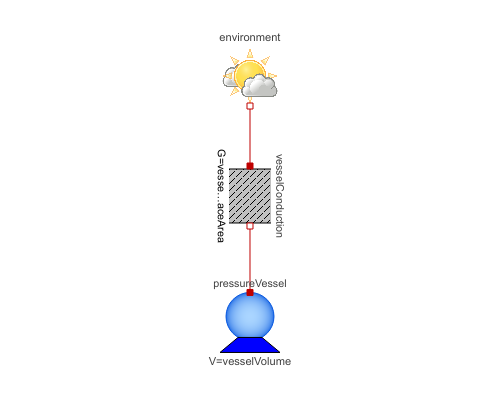WOLFRAM SYSTEM MODELER
GasTankStressModelModel of the stresses affecting a gas tank |
|
Diagram
Wolfram Language

SystemModel["IndustryExamples.IndustrialManufacturing.GasTankStress.GasTankStressModel"]
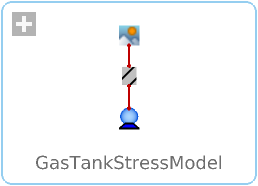
Information
This model analyzes the stresses that a pressure vessel experiences from expanding and contracting gases. If a pressure vessel is filled with a gas that is colder than the ambient temperature, the pressure inside the vessel will increase as heat is absorbed. This can lead to significant variations in pressure levels, especially if it is exposed to a varying ambient temperature.
Changing Parameters
The gas or liquid medium that is present in the vessel can be changed by altering the Medium parameter. You can access a drop-down list of preset choices by clicking the small down arrow in the input field. The choice of medium will influence the heat capacity of the vessel, as well as the relationship between temperature and pressure.
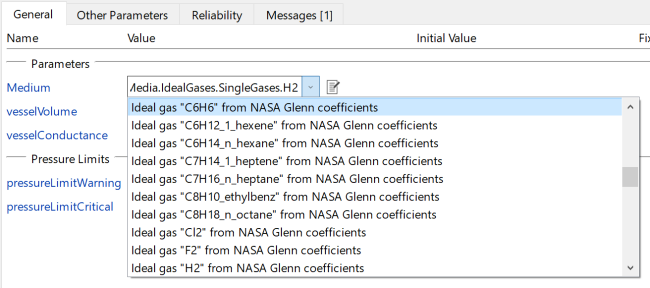
Ambient Temperature
In the model, the ambient temperature is determined by a data table with preset values. The data is from a spring day in Linköping, Sweden and has been gathered using Wolfram|Alpha.
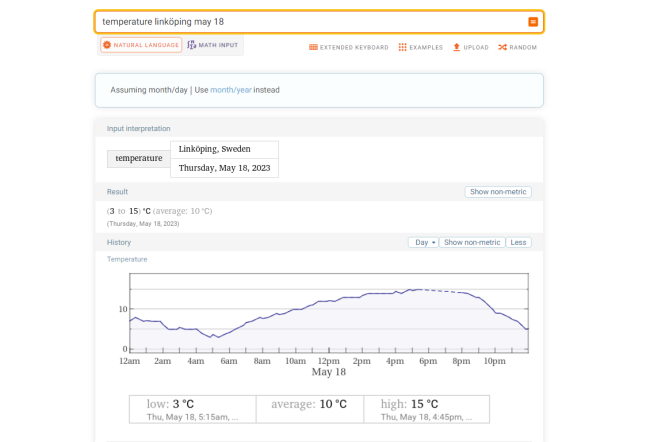
Heat transfer between the ambient environment and the content of the pressure vessel is determined by the conductance of the vessel material. Different materials can be selected by accessing the drop-down menu in the VesselConductance parameter.
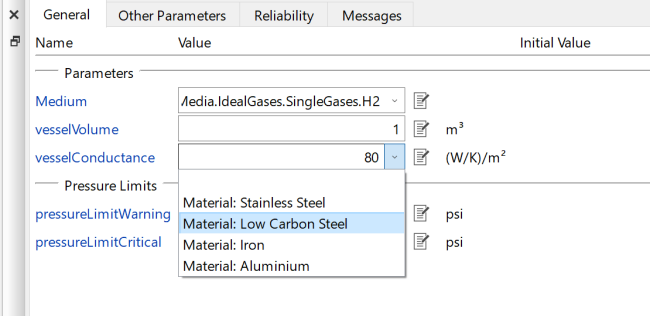
Plot the Results
Click the Simulate button:
After simulating the model, you will see the Gas Pressure and Limits plot:
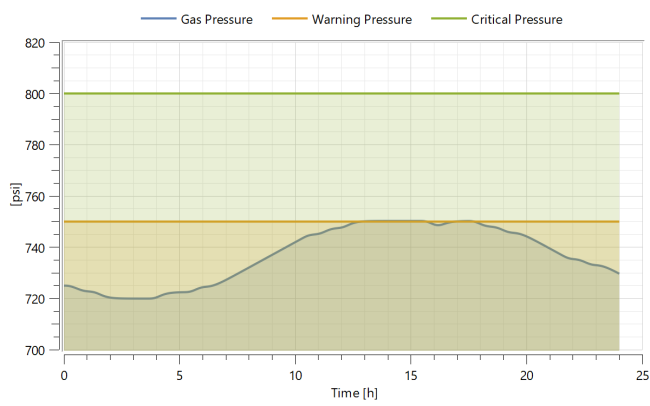
This graph explores how the pressure varies during the day and how it relates to the pressure limits set in the model.
Other stored plots can be accessed in the Stored Plots section of the Experiment Browser. The Temperatures plot shows the gas and ambient temperature variations during the day. The higher the heat conductivity of the pressure vessel, the more closely the two temperatures will follow each other. A gas with lower heat capacity will also adjust more quickly to the ambient temperature.
The Pressure vs. Temperature plot displays a parametric plot of gas temperatures versus gas pressures. If an ideal gas is used, this will be a straight line.
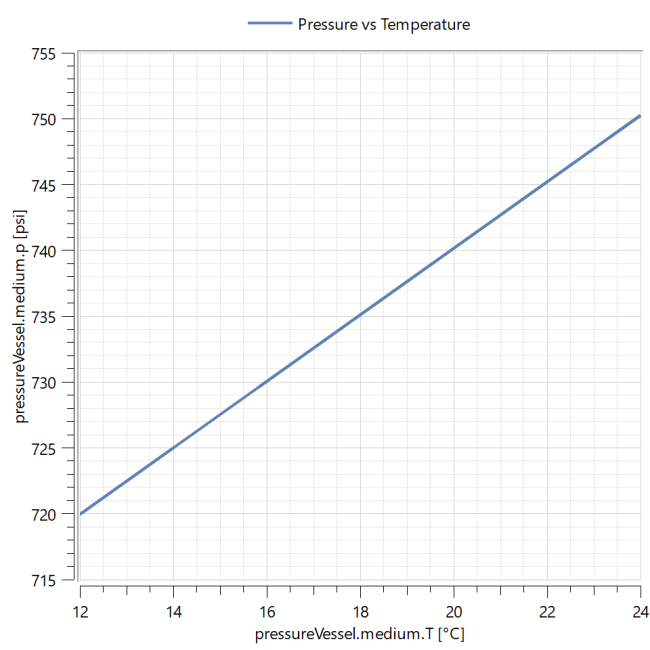
Parameters (6)
| vesselVolume |
Value: 1 Type: Volume (m³) Description: Inner volume of pressure vessel |
|---|---|
| vesselSurfaceArea |
Value: 4 * Modelica.Constants.pi * vesselRadius ^ 2 Type: Area (m²) Description: Surface area of the vessel |
| vesselRadius |
Value: (vesselVolume * (3 / 4) * (1 / Modelica.Constants.pi)) ^ (1 / 3) Type: Length (m) Description: Radius of the vessel |
| vesselConductance |
Value: 80 Type: Real ((W/K)/m²) Description: Thermal conductance of the vessel shell |
| pressureLimitWarning |
Value: 5171067.96987627 Type: Pressure (Pa) Description: Pressure limit where a warning is issued |
| pressureLimitCritical |
Value: 5515805.83453469 Type: Pressure (Pa) Description: Pressure limit where risk of structural failure critical |
Components (3)
| pressureVessel |
Type: FixedVolume Description: Fixed volume representing a gas tank |
|
|---|---|---|
| vesselConduction |
Type: ThermalConductor Description: Lumped thermal element transporting heat without storing it |
|
| environment |
Type: Environment Description: Heat source containing a table of ambient temperatures |

